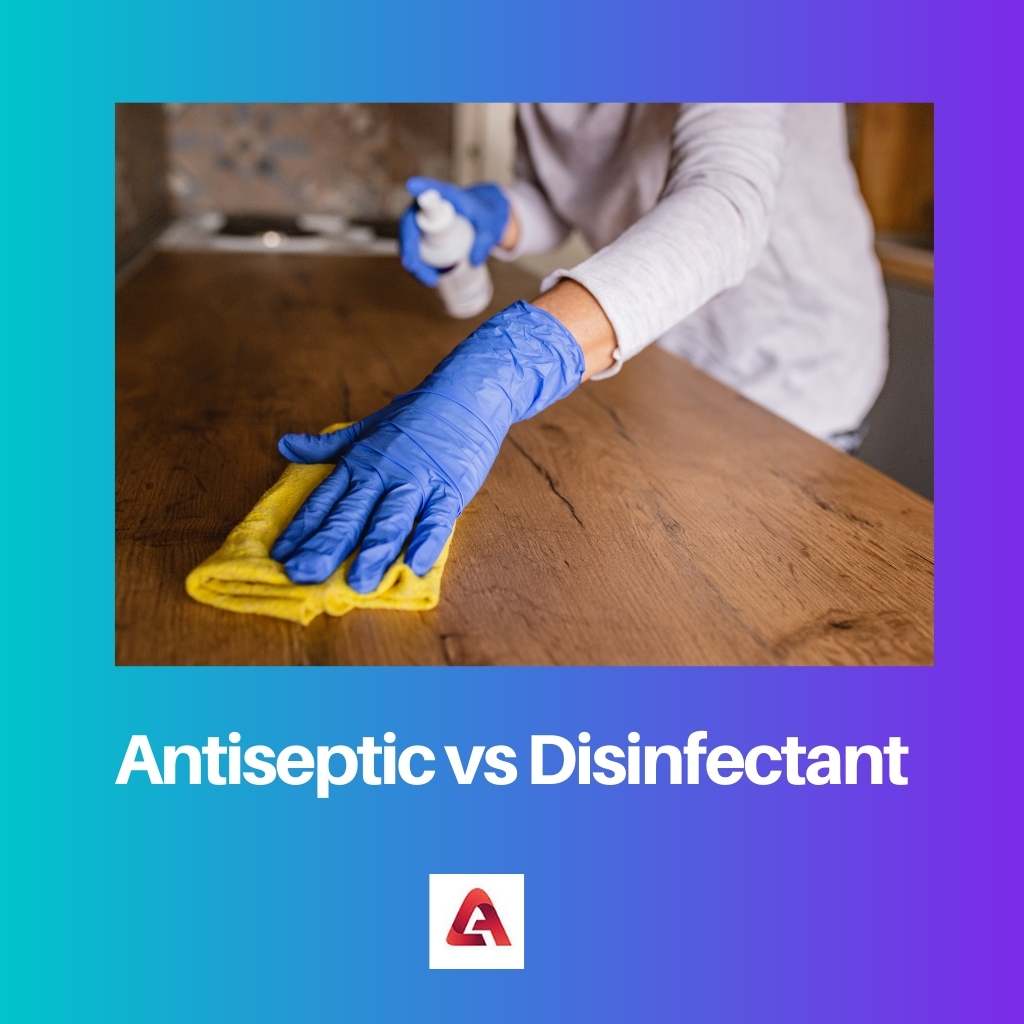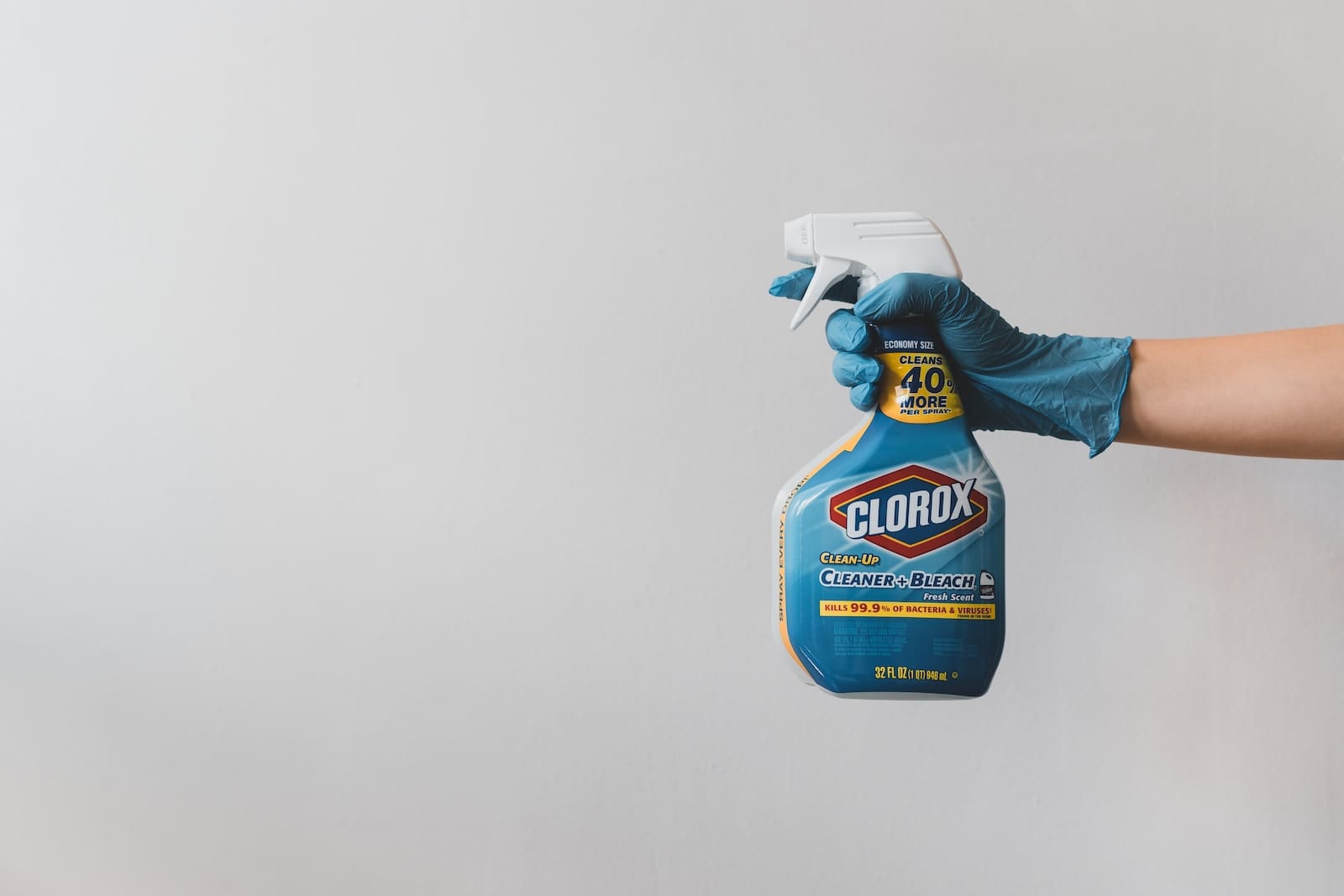Infections and micro bacteria are part of human life in the current scenario. It is hard to escape from all that, and where they both come, other terms are considered Antiseptic and Disinfectant to vanish them all.
These chemical reactions secure our everyday life from harmful diseases. Though they remove the impurities still different from each other in many ways, as discussed below.
Key Takeaways
- Antiseptics are used on living tissue to prevent infection and promote healing, while disinfectants are applied to inanimate objects to destroy pathogens.
- Disinfectants are stronger and more toxic than antiseptics, making them unsuitable for use on living tissue.
- Properly utilizing antiseptics and disinfectants is crucial for maintaining hygiene and preventing the spread of infections.
Antiseptic vs Disinfectant
The difference between Antiseptic and Disinfectant is that Antiseptic kills germs on our skin, and Disinfectant kills germs on the surface, whereas Antiseptic is effective on microorganisms on the other, hand Disinfectant is effective on bacteria. Both are used for the removal of harmful viruses that cannot be seen with the human eye.

The term Antiseptic means a cleaning agent of biocides in our body to protect us from viral infections. It is prominently used in healthcare to clean open wounds or clean hands.
They destroy and prevent the growth of infection-causing agents in the human body. The liquid solution of Antiseptic is used for applying in broken skin areas against harmful germs.
The term Disinfectant means a cleaning agent of harmful germs growth on non-living surface areas. It prevents the spreading of germs using a chemical formula that is not edible and is used only on floors or hard surfaces.
They stop spreading bacteria on surfaces and are mainly used in washrooms, kitchens, and other open surfaces.
Comparison Table
| Parameters of Comparison | Antiseptic | Disinfectant |
|---|---|---|
| Purpose | Antiseptics are used to kill germs on human skin or other living areas. | Disinfectants are used to kill bacteria on floors and other hard surfaces. |
| Microorganisms. | By using Antiseptic we can destroy microorganisms on skin tissues. | By using disinfectants we can prevent the spreading of microorganisms. |
| Pros & Cons | Antiseptics are not harmful to skin tissues in terms of injury. | Disinfectants are injurious to health if used on skin tissues. |
| Chemical Amount | Antiseptics contain a low amount of chemicals in comparison to Disinfectants. | Disinfectants contain a high amount of chemicals to be used on large non-living areas. |
| Usage | In a Surgical activity, a doctor will use Antiseptic on skin-affected areas. | In a surgical activity, a doctor will use a Disinfectant to clean its instruments. |
What is an Antiseptic?
The Antiseptic allows the clearing of skin tissues affected by biocides or microorganisms. A substance used to stop the bacteria causing infection in the human body and spreading of biocides to other human beings.
Most frequently, they are used in hospitals and laboratories during surgery and other medical procedures.
When we witness any surgery, Doctors apply Antiseptic first on their hands and Rub the same solution on the affected area where surgery is to be performed to prevent the effect of germs.
Various types of Antiseptics are used in our daily life, likely hand washing, hand rubs, skin preparations, etc. Especially in winter, advertisements for Antiseptic consumer creams increase, such as Boroline, Boroplus and more.
There are mainly 2 types of Antiseptics, namely consumer and healthcare: Consumer Antiseptics include usage at home, school, and daycare.
Classification of Antiseptics based on their chemical properties are the following:
Antibacterial dye, Halogenated phenol derivative, Peroxide, and permanganate on the other hand, health care Antiseptics are used at clinics, laboratories, nursing homes, doctor’s offices,s, etc.
They are recurring in nature in the case of medical usage. Healthcare workers use them very frequently since it’s their daily exposure to these items.

What is a Disinfectant?
Disinfectant is widely used to control the effect of bacteria on hard surfaces that come in contact with a person.
They are created to be used on specific surfaces like plastic, floors, kitchen counters, medical equipment, bathrooms, etc.
It just controls the spreading of infection, not likely to kill 100%.
Disinfectants contain a high amount of chemical substances, namely Alcohol Formaldehyde, Quaternary ammonium compounds, Phenolics, Hydrogen peroxide, Peracetic acid, Peracetic acid, and hydrogen peroxide,
Chlorine and chlorine compounds, Iodophors, Glutaraldehyde, and Ortho-phthalaldehyde (OPA).
Some Disinfectants include Pasteurization, Metals as microbicides, Flushing- and washer-disinfectors and their major usage are while cleaning medical tools, mopping the floor,
washing bathrooms as we see the advertisement on Indian TV channels, majorly Lizol Disinfectant cleaner for washing floors and tiles for household purposes.
Proper utilization of Disinfectant contains the microorganism we are cleaning, the right amount of concentration, the expiry date of disinfectant, and the temperature of the water if we use and dilute in water.
Precautions must be taken before using hazardous substances like Disinfectants. Handrails, Gas-Counter tops, Refrigerators, and floors are common areas where Disinfectants are used most frequently.
They are not used to kill germs over a person’s skin like bleach and alcohol is a few examples.

Main Differences Between Antiseptic and Disinfectant
- Power: Antiseptic chemicals can kill micro bacteria on the skin, whereas no such chemical is present in disinfectants.
- Examples: Mouth Wash, Hand sanitisers are a few examples of Antiseptics and Alcohol, Bleach are a few examples of disinfectants.
- Risk factors: Antiseptics have a risk factor if used as edible medicine and Disinfectant and harmful if used over skin tissue.
- Definition: A Chemical substance works as an antimicrobial agent known as Antiseptic on the contrary, A Chemical substance limits the spread of antimicrobial agents known as Disinfectants.
- Properties: Antiseptic has the property to clean the infection-prone areas of the human body, specifically the skin and Disinfectants to clean the surfaces to limit the spreading of germs.

- https://www.sciencedirect.com/science/article/abs/pii/037811199190224Y
- https://www.sciencedirect.com/science/article/abs/pii/0166093484900521

This article provides a very interesting explanation of the differences between antiseptics and disinfectants, how they are used and what they are used for. It is very informative and makes you think about the implications of hygiene in everyday life.
I agree, it is very educational to understand the differences between antiseptics and disinfectants in detail. I enjoyed reading this post.
This article is very enlightening about the significance and proper utilization of antiseptics and disinfectants in the prevention of infections. The detailed explanation of the differences between them is very valuable.
The references included in this article add credibility to the information presented. It’s great to have reliable sources to refer to for further study on this topic.
Absolutely, the comparison table provided in the article highlights the key differences between antiseptics and disinfectants. It makes it easy to understand their unique properties and usage.
The detailed explanation of antiseptics and disinfectants, along with their main differences, is highly beneficial. This article serves as a valuable resource for understanding the importance of these substances in maintaining hygiene.
I find the various types of antiseptics and their classification explained in this article to be quite intriguing and it offers a comprehensive overview of these substances.
The use of antiseptics and disinfectants is crucial for maintaining hygiene and preventing the spread of infections. This article provides a great comparison and useful information about both.
This article provides a comprehensive comparison between antiseptics and disinfectants, and it further enhances our understanding of their usage and significance in preventing infections.
The emphasis on precautions and proper utilization of disinfectants in this article is noteworthy. It highlights the importance of handling these substances carefully to avoid any risks.